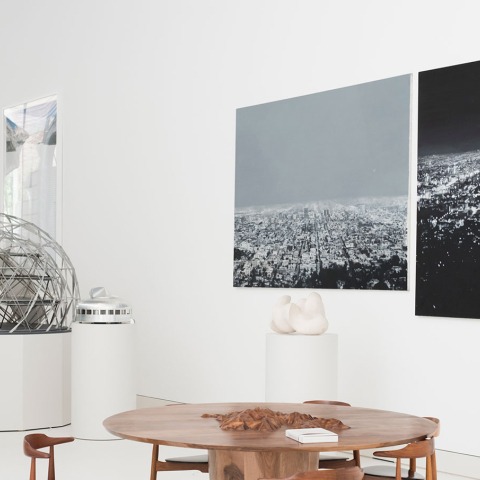Foster has chosen Spain, in particular its capital, to locate its foundation, in which it has installed its monumental archive of more than 74,000 pieces, and its "trend laboratory", open to new generations of architects, designers and town planners. Explore and identify what the future will be.
The "Future is now" day began at 8 o'clock in the morning, with long queues at the doors of the theater to access the sessions of the forum - all free and entirely in English - attended by 1,800 People, including 1,100 students from 32 universities in Spain and abroad.
"The Foundation is a hub that can help those who want to contribute to technological and social change and build a society of the future," Norman Foster said in his keynote address. The architect, who has predicted the disappearance of the car as we know it, has defended design and clean technologies as "the key to the future." "I am optimistic. I think cities can change the world, that small changes make big differences. And design and technology are the keys to that change."
The growth of cities is one of the great challenges of the future: 75% of the world's population will live in cities in 2050 and in some cities, such as Lagos, Dakar or Jakarta, every 30 seconds There is a new person, by birth or displacement, has indicated.
Foster has also warned that recent catastrophes such as Katrina or Hurricane Sandy are just the "first signs" of climate change, another major challenge.
Future is Now, broadcast by live-streaming through the website of the Foundation, has taken place over three sessions dedicated to Cities, Technology and Design and Infrastructure. María Nicanor, director of the Norman Foster Foundation, was in charge of conducting the event and presenting the different sessions.
Apple's chief design director, Jonathan Ive, who the Financial Times's chief editor, Gillian Tett, has presented as "the king of cool," stressed the importance of persevering in ideas, the luck of being surprised by And the need to treat them with care that deserves something both powerful and fragile.
It is important, he said, to have a vision, inspiration and personal curiosity about things, but frustration, he warned, also brings "incredible opportunities."
Co-founder of the MIT Media Lab Design Lab, Nicholas Negroponte, has insisted that "very small, atomic things can now be done" and that there will come a time when nature can be done: "to create buildings From a seed. It is the end of the construction as we know it. "
Michael Bloomberg, patron of the Foundation, philanthropist, entrepreneur and three times mayor of New York has said that problems "come from cities" but also solutions.
The world, he added, has three problems that can become "cataclysms": climate change, nuclear threat and destruction of jobs because of technology.
The designer, architect and founder of Studio Urquiola, Patricia Urquiola, has stressed that one can not speak of a single future, but of many, especially for the young.
The forum, which has also been attended by government spokesman and Minister of Education, Culture and Sports, Íñigo Méndez de Vigo, has concluded with two artists experienced in facilities in public places, such as the Danish Olafur Eliasson and the British Cornelia Parker.
Eliasson, whose work explores the relationship between man, nature and technology, has claimed the power of art to "change behavior" and has set the example of the huge ice blocks from Greenland, which he planted in the center Of Paris during the last climate conference to raise awareness about the gravity of the thaw.
"Sometimes physical knowledge is more direct than the intellectual," said the Danish, famous for its facilities of light.
It was not the only time Trump came out. Chilean architect Alejandro Aravena, Pritzker 2016 Prize, said that there are many infrastructures in which to invest in the world to do it "on stupid walls".






































